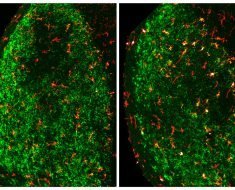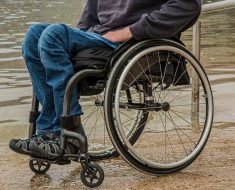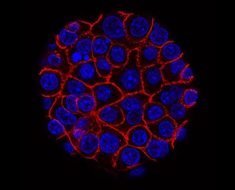A sentinel node biopsy (SNB) is a clinical procedure in which the sentinel lymph node is removed and tested for the presence of cancer cells. If the result of an SNB is negative, it can suggest that the cancer has not spread to the lymph nodes or other parts of the body.
A positive result for an SNB indicates the presence of cancerous cells in the sentinel lymph node and possibly in other lymph nodes in the surrounding area. The information gained from SNB is crucial for doctors in staging the cancer and devising a customized treatment plan.
SNB is usually performed along with the surgery to remove the primary tumor, though it can also be done before or after tumor removal. The advent of SNB has enabled more accurate staging of cancer in several cases and also helps rule out the need of axillary dissection in some patients. SNB has been shown to be successful in detecting cancer in over 95% of breast cancer cases.
Axillary sampling
Axillary sampling involves the removal of a few suspicious lymph nodes to examine for the presence of cancer cells. About 3 to 6 nodes need to be removed for adequate sampling and accurate staging of the axilla. There are various axillary sampling methods based on the site of dissection and number of nodes dissected. They include:
- Pectoral lymph node biopsy: for patients who may not require post-operative radiotherapy following mastectomy. It involves the removal of nodes located at the upper portion of the breast’s axillary tail. Pectoral node-negative patients do not require radiotherapy post mastectomy.
- Triple node biopsy: involves removal of three nodes – first node from the lower axilla, second from the top of the axilla, and the third one from the internal mammary chain.
- Five-node sampling: involves the dissection of the breast’s axillary tail until five nodes are removed.
- Four-node sampling
- Lower axillary sampling.
Many studies have argued against axillary sampling and have concluded that it is not a reliable method for axillary staging. According to one study, increasing the number of nodes removed to up to 10 resulted in higher chances of finding a metastatic node and thus strongly recommended removing about 10 nodes for sampling. Some other studies found that axillary sampling is associated with a risk of under staging the axilla and thus patients who are node-positive may not be recognized or treated appropriately.
SNB, axillary sampling, and axillary dissection
The standard surgical procedure in breast cancer patients is axillary node dissection, which involves the removal of the tumor along with all the axillary nodes involved.
However, axillary dissection is associated with high morbidity. The most common complications of axillary node dissection include seroma, shoulder movement restriction, delayed wound healing, and parasthesia of the axilla and shoulder. In rare cases, Stewart-Treves syndrome and lymphangio-sarcoma may present.
A study involving stage I and II breast cancer patients showed that axillary dissection is overused by physicians. In cases where there is no axillary node metastasis, axillary dissection is unnecessary and such cases need a procedure that can help in axillary staging without many complications.
Studies have shown that axillary sampling is associated with less morbidity when compared to axillary dissect. SNB and axillary sampling have been recommended as an alternative to axillary dissection to reduce morbidity.
References
- http://www.ncbi.nlm.nih.gov/pmc/articles/PMC1356367
- K. J. Edwards, M. A. Dordea, R. French, V. Kurup, Role of Combined Sentinel Lymph Node Biopsy and Axillary Node Sampling in Clinically Node-Negative Breast Cancer, Indian J Surg. 2015 Dec; 77(6): 495–501. doi: 10.1007/s12262-015-1300-1
- http://www.cancer.gov/about-cancer/diagnosis-staging/staging/sentinel-node-biopsy-fact-sheet
Further Reading
- All Biopsy Content
- Biopsy – What is Biopsy?
- Types of Skin Biopsy
- What is a Breast Biopsy?
- What is a Skin Biopsy?
Last Updated: Apr 22, 2019

Written by
Susha Cheriyedath
Susha has a Bachelor of Science (B.Sc.) degree in Chemistry and Master of Science (M.Sc) degree in Biochemistry from the University of Calicut, India. She always had a keen interest in medical and health science. As part of her masters degree, she specialized in Biochemistry, with an emphasis on Microbiology, Physiology, Biotechnology, and Nutrition. In her spare time, she loves to cook up a storm in the kitchen with her super-messy baking experiments.
Source: Read Full Article





